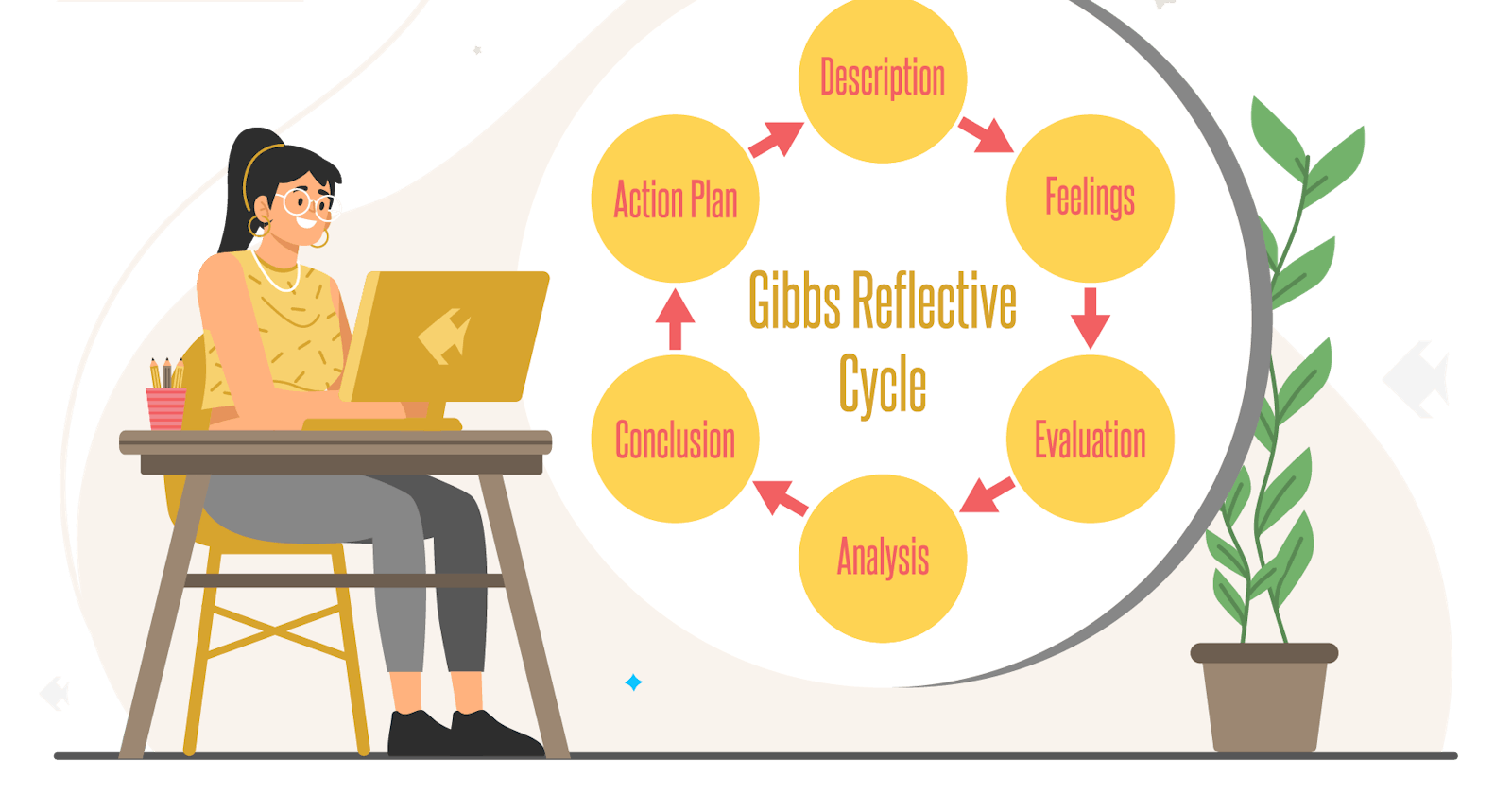Human beings like to learn and improve from experiences, but this process requires an element of introspection. This means that experiencing something isn’t enough in itself to learn from it. Indeed, you also need to consciously think about your experiences, reflect on them and assess what can be done better. Only then will you improve and get better results the next time.
What Is the Gibbs' Reflective Cycle
The Gibbs' Reflective Model approach aims at providing you with the right tools to understand this "learning from experience" process and make the most of it. Note that this method can be applied in many different situations, such as self-improvement, coaching, or mentoring, but it's most commonly used to describe the way people learn about their own behaviors and thoughts.
6 Stages of Gibbs’ Model of Reflection
The Gibbs' reflective model is a framework giving structure into the process of learning from experiential learning through six stages: description, feelings, evaluation, analysis, conclusions, and plan of action.
Each of the six stages of Gibbs’ model encourages the individual to reflect on their experiences through questions.
Step 1. Description
During this step, the idea is for you to describe a situation and understand what happened in that specific situation. Some of the questions you can ask yourself to help include:
What happened, and what did you do, or how did you react?
Were other people involved in this situation? If so, what did they do?
What was the outcome?
Note that during this stage, you should only state what happened and not give your opinion or jump to conclusions. Instead, try to describe the situation as it unfolded as accurately as possible.
Step 2. Feeling
During this stage, the self-reflection process will help you understand how you felt before, during, and after a situation and how your feelings might have impacted your experience. In order to self-improve, some of the relevant self-reflection questions to ask yourself include:
What did you feel during the situation?
What did you feel after the situation?
Were other people involved in the situation? If so, what do you think others felt about the situation?
What do you think other people feel about the situation now?
What were you thinking during the situation?
What do you think about the situation now?
This step is particularly important as the way you felt during a situation will determine whether you need to improve and work on yourself to feel better next time a similar situation arises.
Step 3. Evaluation
During the evaluation stage, the idea is for you to objectively look at the situation and try to understand what worked and what didn't. As a result, ensure you focus on both the positive and negative aspects of a situation to make the most of your personal reflection process. Some of the questions you should ask yourself include:
What was good about the experience? What went well?
What was negative about the experience or situation? What didn’t go well?
Did you and other people contribute positively or negatively to the situation?
Step 4. Analysis
This is one of the most critical steps to the model. During the analysis stage, you’ll get a chance to understand why the experience was positive or negative. The model suggests that you separate what went well and what didn’t and question why. Some of the questions to ask yourself include:
Why did things go well, or why didn’t they?
What sense can I make of this experience?
What additional knowledge can I use to help me better understand this experience?
Step 5. Conclusion
During this step, it’s time to draw conclusions about what happened. You’ll have the opportunity to sum up what you’ve learned so far and highlight what specific changes to your actions could help improve the future outcome. Some helpful self-reflection questions to ask yourself include:
What did you learn from this situation?
How could the situation have been more positive for everybody?
What skills do you need to acquire to better deal with a similar situation in the future?
What else could you have done during this situation?
Step 6. Plan of Action
This is your time to plan what you should do differently the next time a similar or related situation arises. Besides, not only should you plan what you would do differently, but you should also know how to make it happen. Some of the relevant questions you should ask yourself include:
If you had to go through the same situation again, what would you do differently?
How are you going to develop the skills you need to handle things better?
How will you implement the new skills you have developed?
How can you review your progress?
For more tips, sample and example - read the full article "Gibbs’ Reflective Cycle" by Productive Fish: https://productive.fish/blog/gibbs-reflective-cycle/
